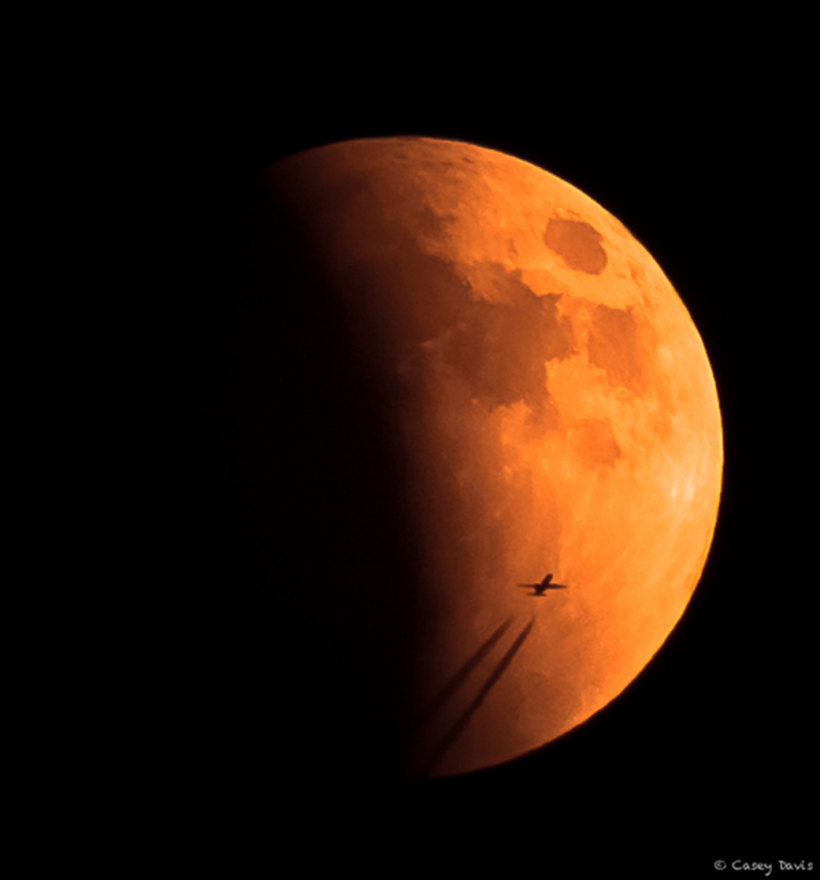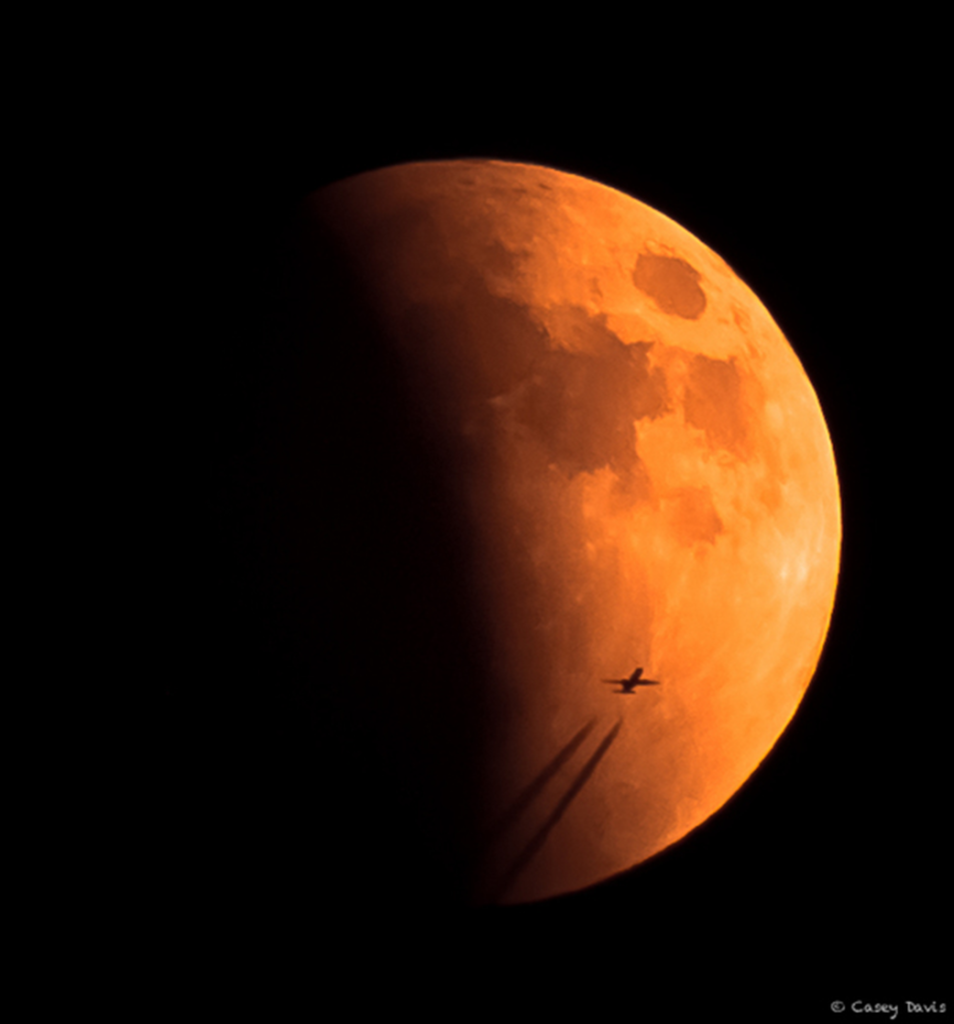
Super Blood Moon.
Kind of sounds like the title for a low budget sci-fi horror flick or at the least like the end of days, right? A super blood moon is actually just a breathtaking astronomical event that doesn’t come around too often, and that some of you were hopefully able to catch a glimpse of around a week ago (Sunday, September 27th). The super blood moon is actually kind of a conglomerate of three separate events acting in unison to provide quite the view. The first of these is a full moon…not very rare, after all, they come around about every 29 days. Next, we have the supermoon, which generally comes about 4-6 times a year. The third and final event is a total (in this case) lunar eclipse, which happens from 0-3 times a year on average. Doesn’t seem too extraordinary yet, does it? Well, if you combine these things to form the super blood moon that we saw the other night, you get something far less common. This rare occurrence last came about was in 1982 & we won’t get to see it again until 2033! A little bit more interesting now, right? Well, hopefully you all got to see this, but here at EAF, we’re a little more interested in talking a little bit about what exactly a super blood moon is. So we already talked about what this event is a combination of, but what actually are these constituent pieces of the puzzle that we mentioned earlier?
The Full Moon
The full moon itself is really pretty straight forward and many of you are probably familiar to at least some level with the lunar phases. The Sun is at the center of our solar system, and the planet Earth revolves (or orbits) around it. The moon in turn revolves around the Earth & does so in a synchronous rotation or tidal locking. This locking basically means that the gravitational differential field (more simply put, the gravitational attraction, which is not constant over all regions of either planet) set up between the moon and the Earth is such that the moon will rotate one full time about its own axis in almost exactly the same amount of time as it will complete one full orbit around the earth, resulting in the same “face” of the moon facing the Earth at all given times. So, if the same part of the moon is facing the Earth at all times, you may be wondering what changes? What changes is the lunar phase, as dictated by the amount of sunlight illuminating the near-Earth side of the moon, as controlled by the position of the moon in its orbit relative to the position of the Sun. The result: constantly changing levels of illumination (& therefore visibility) of the moon for an observer situated on Earth, from 0% (New Moon) to 100% (Full Moon). So, during the super blood moon, 100% of the moon’s near-Earth face was illuminated for us to see, yielding a nice, big, bright picture & enhancing the next two aspects.
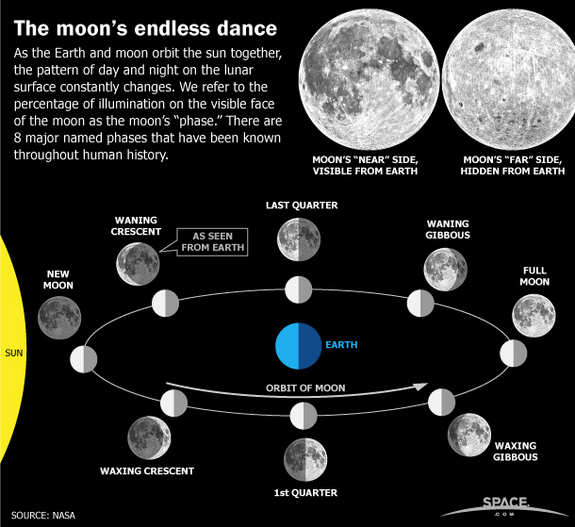
The Supermoon
Now, a supermoon is basically exactly what it sounds like…it is an event during which the moon appears to be very big or super. This happens because the moon has reached the perigee in its orbit, or the point within its orbit about the Earth at which it is closest to the Earth (as opposed to the apogee, the point in the orbit when the moon is the furthest from the Earth). When you combine this near-Earth situation with a nice, bright New Moon, you get the seemingly larger-than-life supermoon, which on average appears somewhere between 14-33% larger than the moon on any given night. Now with the size & brightness taken care of, it’s time to talk about the color.
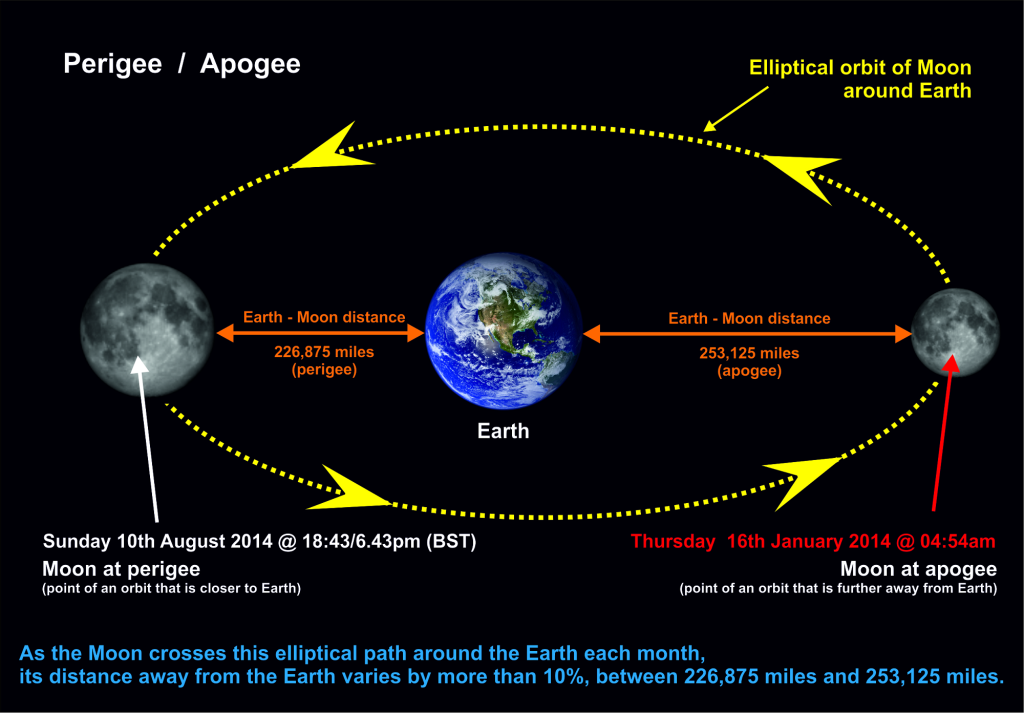
The Lunar Eclipse
The event that gives the super blood moon its color is actually just a lunar eclipse. There are various degrees of lunar eclipsing, so to speak. The most impressive by far, and the one we see during a super blood moon is a total lunar eclipse. Essentially, the Earth is situated between the Sun and the moon with all three (Sun, Earth, moon) perfectly aligned (very temporarily, of course…in fact, technically, only instantaneously, but the three are in close enough alignment for long enough to allow us to really get to see this “total” eclipse for a while. Anyways, basically the Earth totally eclipses out the Sun from the moon…but if this is the case, then why isn’t the moon completely shadowed out, dark, and colorless? Afterall, since the moon does not have any light of its own, all light, and thus color, seen coming from the moon are actually reflections of sunlight off of the moon’s surface. Well, we have the Earth’s atmosphere to thank for this. If it was not for the Earth’s atmosphere, the moon would just be cast in a boring shadow, but because of the atmosphere we get to see the nice orange color of the “blood moon” due to light refraction, in which the relatively dense & thick atmosphere surrounding the Earth does not allow all wavelengths (and thus, colors) of light to pass through as easily. Shorter wavelengths, such as your violets, blues, and greens tend to be scattered off of atmospheric molecules fairly easily, whereas longer wavelengths (such as your yellows, oranges, and finally reds, in the visible spectrum) are able to pass through the atmosphere relatively undisturbed a little more easily, thus these are the wavelengths of light that make it to the moon’s surface & are reflected back for us to see.
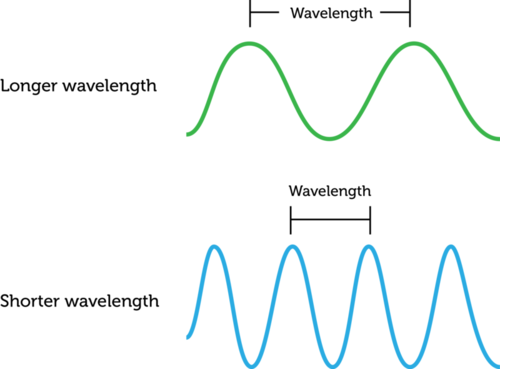
To help in visualizing this, imagine you have two pieces of metal wire (like an unfolded paperclip). The first wire, you fold a bunch of waves into, so it kind of looks like an accordion, or a spring. The second wire, you just put one wave into (that covers the entire length), so it looks just like an elongated “S” curve. Now, you try to push/thread both of them through a block of Jell-O. Which one would be more difficult? The one with all of the folds in it, right? This one has a shorter wavelength and thus is harder to weave through the Jell-O, just as the violets, blues, and greens have a harder time making it through the Earth’s atmosphere.
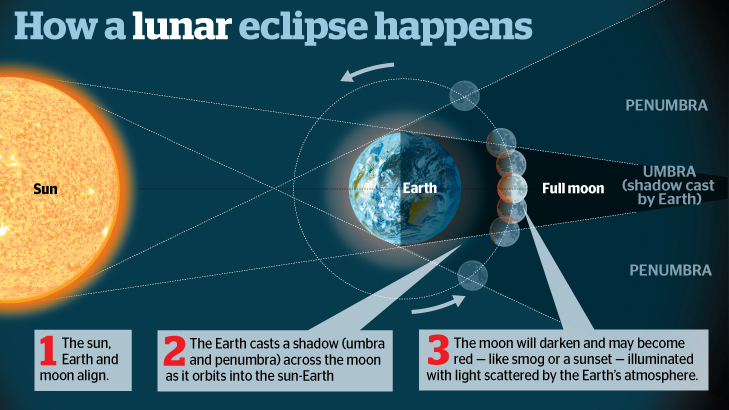
So, there you have it, now you can go and tell all your friends about what a super blood moon really is & you can be prepared well in advance for the next one…after all, it’s only another 18 years away!

